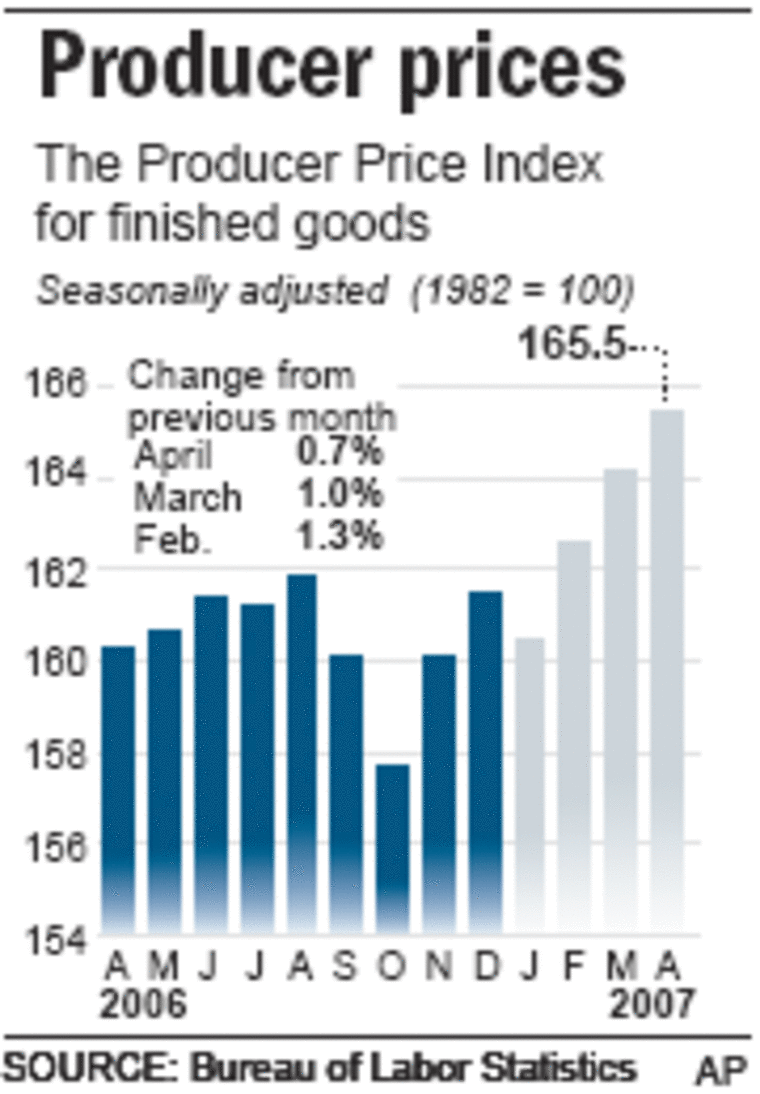Consumers, battered by surging gasoline prices, cut back spending for clothes, cars and other items in April, raising worries about the already weak economy.
Retail sales fell 0.2 percent in April, the first decline in seven months, the Commerce Department reported Friday. Meanwhile, the Labor Department said that wholesale prices surged by 0.7 percent, led by a third consecutive big rise in gasoline prices.
The weak retail spending and the big rise in gasoline prices were seen as delivering a double whammy to the economy. The worry is that if gasoline prices spike further and the troubles in housing deepen, then consumers could significantly trim spending and the country could move toward a recession.
In Washington, a city with some of the longest commuting times in the country, consumers were definitely feeling the pinch of the higher gasoline prices.
“It’s highway robbery,” said Andi Powell, 33. She said she and her boyfriend are spending about $90 per week in gas for their commute to Washington from Baltimore. “I just started to do a lot more home entertaining, just trying to find ways to make up the difference” in the higher gas costs.
Zenobia Jackson, 32, of College Park, Md., said she is spending $60 to $80 per week for gas to drive to her computer job in Virginia. “There’s not much I can do,” she said.

Growth in the overall economy slowed to a lackluster 1.3 percent rate in the first three months of this year, the slowest pace in four years. Analysts were looking for that figure to be revised even lower based on a string of weaker-than-expected economic reports, raising the odds that some unexpected jolt could turn weak growth into an outright downturn.
“The higher gasoline prices combined with a weakening housing market and a softer job market are weighing on consumers,” said Mark Zandi, chief economist at Moody’s Economy.com.
The RBC Cash Index of consumer confidence posted a reading of 87.1 in early May, little changed from April’s figure of 85.4, which had been a six-month low, as consumers continued to be anxious about economic prospects given rising energy prices and the slumping housing market.
Former Federal Reserve Chairman Alan Greenspan, who sent financial markets into a tailspin back in February with his worries about a recession, used the “R” word again on Friday although he sought to put a more positive spin on his views, emphasizing the likelihood that a downturn can be avoided.
“The odds are 2-to-1 that we won’t have a recession,” Greenspan said in a speech delivered by satellite to a business group in Singapore, according to a participant.
Wall Street was not jolted by Greenspan’s latest comments as investors took comfort from the price report because it showed little price pressure outside the areas of energy and food. The Dow Jones industrial average soared 111.09 points on Friday, its biggest point rise so far this month, to end the week at 13,326.22. The rebound gained back most of the nearly 150 points the Dow had lost on Thursday.
The so-called core rate of inflation, which excludes food and energy, was unchanged in April, better than the 0.2 percent rise analysts had expected.
The Federal Reserve this week kept interest rates where they have been since last June, with officials saying they remained more worried about the threats from inflation than the weakening economy. Some analysts said the Fed could be making a mistake by keeping rates too high for too long especially if consumer spending, which accounts for two-thirds of total economic activity, weakens further.
“Consumers are being pressured by surging energy and food costs and they don’t have that much left over to spend on lots of other things,” said Joel Naroff, chief economist at Naroff Economic Advisors.
The weak report on retail sales from the government came a day after a survey of the nation’s biggest retailers, who reported disappointing sales in April.
Analysts said some of the problems reflected the fact that Easter came early this year, pulling sales into March that would normally have occurred in April. But they still worried about the widespread nature of April’s sales weakness.
There were declines in sales at auto dealerships, hardware stores, specialty clothing stores and department stores. The 0.2 percent drop would have been an even larger 0.4 percent fall if it had not been for a 1.7 percent jump in sales at gasoline stations, reflecting the higher pump prices.
Analysts said motorists are likely to see gas prices rise even higher in May, reflecting a loss of refinery capacity this spring because of unexpected shutdowns. Gasoline surged to a record nationwide average of $3.07 per gallon, nearly 20 cents higher than two weeks earlier, according to the latest Lundberg Survey. That surpassed the record of $3.03 per gallon set last August.
The 0.7 percent increase in wholesale prices last month followed an even larger 1 percent jump in March with gasoline prices rising by more than 8 percent in each month.
Wholesale food costs were up 0.4 percent in April, a significant slowing after four straight months of 1 percent-plus readings. Outside of food and energy, the unchanged performance of core inflation reflected a decline of 1 percent for new cars and a 0.5 percent drop in the category that includes sport utility vehicles.